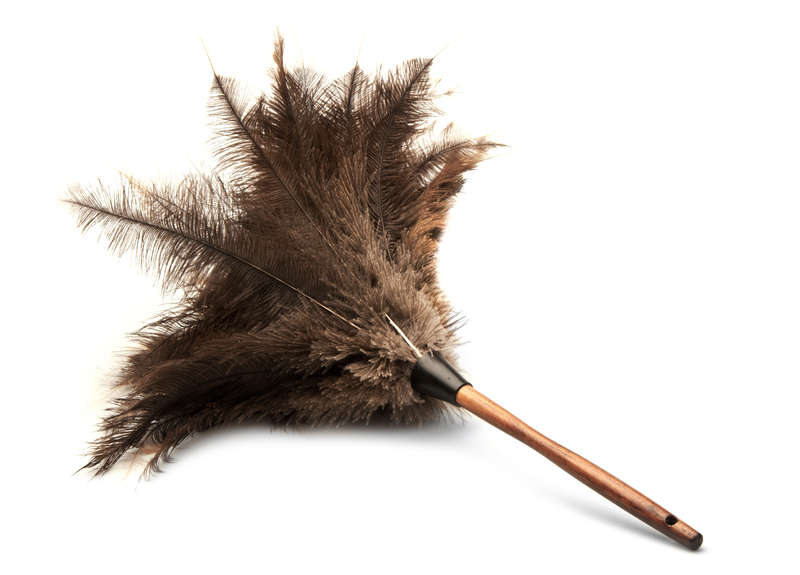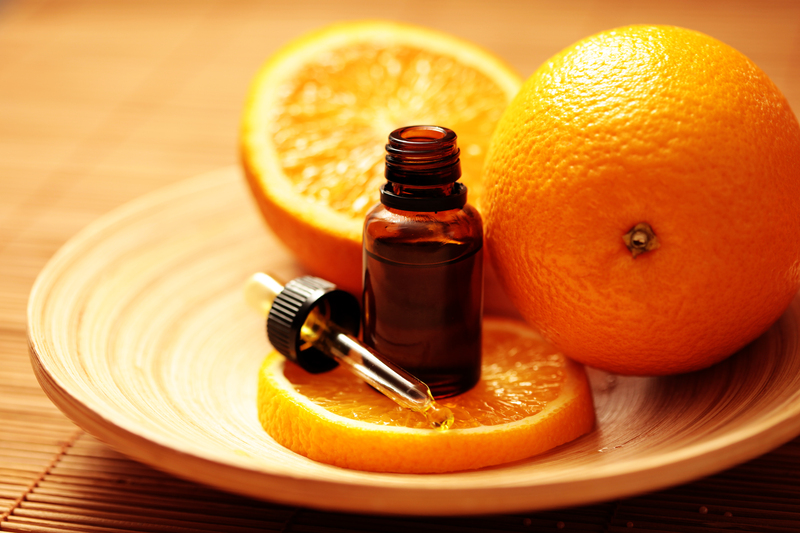Mastering Velvet Curtain Care: Wash with Confidence and Ensure Longevity
Posted on 16/09/2025
Mastering Velvet Curtain Care: Wash with Confidence and Ensure Longevity
Velvet curtains bring a unique combination of luxury and warmth to any home. Their lush texture and vibrant colors can instantly elevate a space, but these exquisite drapes demand proper maintenance to stay beautiful for years. Understanding the right techniques to care for your velvet drapes will not only keep them looking fresh but also extend their lifespan. In this comprehensive guide, we uncover the secrets to washing velvet curtains with confidence and ensuring their longevity.
Why Do Velvet Curtains Require Special Care?
Velvet is prized for its sumptuous pile--a dense collection of fibers that creates its signature soft feel and shimmering appearance. However, this very texture makes caring for velvet curtains more challenging than for standard fabric drapes. Without the right care, improper cleaning can result in:
- Crushed or flattened pile
- Water spots
- Permanent creases or wrinkles
- Color fading
- Shrinkage
Mastering velvet curtain care ensures you wash them confidently and avoid these common pitfalls.

Understanding Different Types of Velvet
Before diving into cleaning methods, identify which type of velvet you own. This is crucial for selecting the proper care technique:
- Cotton velvet: Traditional, breathable, and relatively easy to care for, but prone to shrinking if exposed to excessive heat or moisture.
- Synthetic velvet (polyester, nylon, viscose): More resilient and less prone to shrinkage, but can sometimes be more difficult to restore if the pile is damaged.
- Silk velvet: The most delicate, easily damaged by water or harsh detergents. Usually requires professional dry cleaning.
- Crushed velvet: Features a deliberately textured surface, which can hide some minor wear but still needs gentle care.
Always check the care label before cleaning to avoid accidental damage.
Routine Maintenance for Velvet Curtains
Consistent upkeep between washes will prolong the lushness and beauty of your velvet drapes. Here's how you can incorporate routine velvet curtain care into your home cleaning schedule:
1. Regular Dusting
- Use a soft brush attachment on your vacuum cleaner to gently remove dust, working in the direction of the pile.
- Perform this once every 2-4 weeks, more frequently in dusty environments or high-traffic rooms.
2. Spot Cleaning
- If you notice spills or spots, blot the stain immediately with a clean, dry cloth. Avoid rubbing as this can flatten or damage the pile.
- Use a mild, upholstery-safe cleaner as directed, testing it first on a hidden area.
- Allow the spot to air-dry completely.
3. Shaking and Airing
- Take down your curtains periodically and gently shake them outside to release trapped dust and dirt.
- Hang them in a well-ventilated area to air out and prevent any musty odors.
How to Wash Velvet Curtains with Confidence
While washing velvet curtains may seem intimidating, following the right process can help you keep them in pristine condition. Whenever possible, consult the manufacturer's instructions for your specific velvet type.
Hand Washing Velvet Curtains
Hand washing is the safest method for most cotton, crushed, and some synthetic velvets.
- Fill a bathtub or large basin with lukewarm water and add a mild detergent formulated for delicates.
- Submerge the curtain, gently agitating it with your hands. Do not wring, twist, or scrub the fabric.
- Let it soak for up to 10 minutes.
- Rinse thoroughly with cool, clean water until all suds are gone.
- Carefully lift the curtain from the water, supporting its weight to avoid stretching.
Can You Machine Wash Velvet Curtains?
Machine washing should generally be reserved for synthetic velvet curtains labeled "machine washable."
- Use the delicate or gentle cycle with cold water.
- Add a small amount of mild liquid detergent designed for delicates.
- Place each curtain in a mesh laundry bag for added protection.
- Avoid washing with heavy or coarse items that could crush the velvet's pile.
After the wash is complete, remove the curtains promptly to prevent creasing.
When to Dry Clean Velvet Curtains
Certain velvets, particularly silk and antique velvet curtains, must be professionally dry cleaned to protect their structure and finish. This method is also best if your curtains have intricate trims, beading, or are heavily soiled.
- Take your curtains to a reputable cleaner that specializes in delicate or luxury fabrics.
- Inform the cleaner of any specific stains or problem areas.
Drying Velvet Curtains: Essential Tips for Preservation
How you dry your velvet drapes is as important as how you wash them. Improper drying can permanently damage the fabric's pile and drape. Follow these essential velvet curtain care tips for drying:
- Never wring out velvet curtains after washing. Instead, lay them flat on a clean towel and carefully roll to press excess water out with gentle pressure.
- Do not twist or squeeze the fabric, as this can crush the pile.
- Reshape the curtain while it is still damp, smoothing out any creases with your hands.
- Hang the curtain on a sturdy rod or lay it flat to air dry in a well-ventilated, shaded area. Avoid direct sunlight, which can fade colors.
- Avoid clothes dryers and heat sources, as high temperatures will damage velvet fibers and cause shrinkage.
Pro Tip: For large or heavy velvet drapes, drape them over multiple drying racks or rods to evenly distribute the weight and prevent stretching.
How to Restore Velvet Curtain Pile and Prevent Crushing
After cleaning and drying, you may notice areas where the velvet pile looks flattened or crushed. Here's how to revive your curtains:
- Use a steam cleaner or garment steamer at a low setting to gently re-fluff the pile. Hold the steamer a few inches away, and pass over the fabric without saturating it.
- Gently brush the surface with a soft-bristled clothes brush to raise the pile while the curtain is slightly damp.
- For stubborn areas, lightly mist with water and then brush in the direction of the pile.
Avoid ironing velvet directly, as this can crush the nap permanently. If you must remove creases, use a velvet board and press very lightly on the reverse side.
Protecting Velvet Curtains for Long-Term Longevity
Beyond regular cleaning, there are several strategies you can use to safeguard velvet curtains for years to come:
1. Limit Sunlight Exposure
- Place velvet drapes in rooms with indirect light or use UV-protective window films to slow down fading.
- Use sheers or blinds as additional barriers if your windows receive intense afternoon sun.
2. Avoid Excess Moisture
- Keep velvet curtains away from damp areas like bathrooms and kitchens, as persistent humidity can cause mildew or fabric deterioration.
- If your home is humid, consider adding a dehumidifier in the room.
3. Use Tiebacks or Holdbacks
- Tiebacks help reduce wear at the edges and allow curtains to fall naturally without bunching or crushing the pile.
- Choose soft, padded tiebacks that won't leave dents in the fabric.
4. Rotate Curtains Periodically
- Switch the positions of panels or swap curtains between windows periodically to ensure even exposure to sunlight and wear.
Frequently Asked Questions about Velvet Curtain Care
Can I iron velvet curtains?
Ironing velvet directly is not recommended because it can flatten the surface textures. Instead, use a steamer or hang the curtains in a steamy bathroom to ease out wrinkles. If ironing is absolutely necessary, do so on the reverse side with a velvet board and low heat, using a pressing cloth as a barrier.
How often should I wash my velvet curtains?
Ideally, velvet curtains should be deep cleaned only once or twice a year, as excessive washing can wear out the fabric prematurely. Focus on routine maintenance--vacuuming, dusting, and spot cleaning--to keep your curtains looking fresh between washes.
What kind of detergent should I use for velvet drapes?
Choose a mild detergent designed for delicate or hand-wash fabrics. Harsh chemicals and strong optical brighteners can damage fibers or affect the color. For silk velvet, stick with professional dry cleaning only.
Can I use fabric softener on velvet curtains?
Fabric softeners and dryer sheets are not suitable for velvet, as they can leave residues that attract more dust or weigh down the pile. Rinse thoroughly to avoid any buildup.

When to Replace Velvet Curtains
Even with the best care, velvet drapes will eventually show signs of aging, such as thinning pile, excessive fading, or persistent stains. When that time comes, consider updating your decor with a fresh set. Reuse old curtains creatively as upholstery fabric, cushion covers, or other home crafts, so nothing goes to waste.
Conclusion: Make Velvet Curtain Care a Habit
Mastering velvet curtain care isn't just about knowing how to wash velvet drapes--it's about adopting a holistic approach to maintenance. From routine upkeep and gentle washing techniques to mindful drying and periodic professional cleaning, every step helps ensure your luxurious window treatments look beautiful for years. By following these guidelines, you can wash with confidence and secure the longevity of your velvet curtains, preserving both their beauty and your home's ambiance.
Explore more expert tips on curtain care, home decor, and fabric maintenance to keep your living spaces stunning and inviting.




